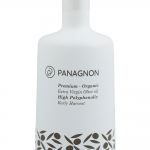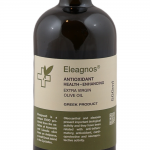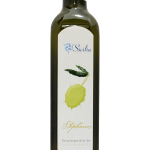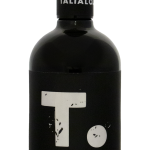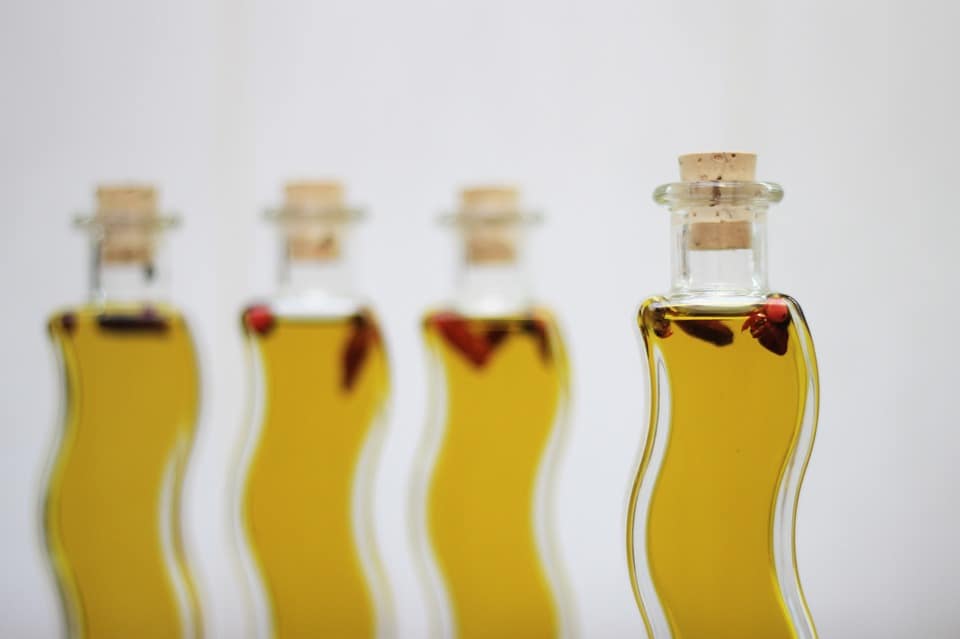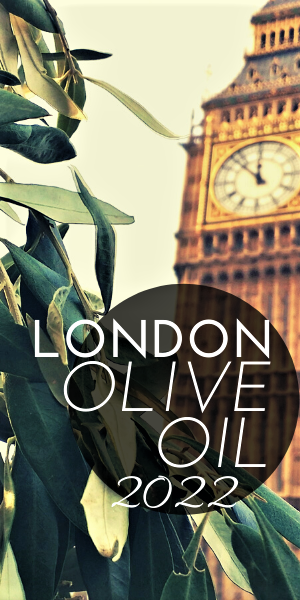In 1976 the wine industry changed forever when a vintage from California was judged superior to its European counterparts. The same thing might be about to happen to olive oil.
On a Sunday morning in Rome, a couple dozen locals gather in an orchard of some 50 olive trees planted above ancient catacombs. The owner has offered lunch in exchange for help stripping the olives so he can get the harvest to a nearby press as quickly as possible. They begin by spreading a circular net around the trunk of a 12-foot-tall tree. Children scamper to the treetop to yank clumps of olives with their fists. Adults below pull fruit off the lower limbs with small rakes, taking care not to stomp on the piles accumulating at their feet. After 15 minutes, the hail of olives tapers off. The net is lifted and the fruit dumped into a small plastic crate—enough for perhaps a liter of oil. The gaggle moves on to the next tree. By the time the sky gets that glow of an Italian day’s end, the stronger of the pickers are loading the crates onto a trailer hitched to a Range Rover bound for a frantoio, or mill, where the olives are to be pressed into golden-green oil.
This farmer is a hobbyist, a weekend artisan. But even at much larger operations, in Italy and across the Mediterranean region, the techniques aren’t dramatically different. The height of the technology is a tractor with a vibrating arm that wraps around the trunks of the trees.
Across the Atlantic, however, an 18-year-old company called California Olive Ranch is upsetting tradition and muscling into the ancient industry by fixing the tree itself.
The company’s 2,200-acre orchard, an hour north of Sacramento, is an industrial marvel. The 1.3 million trees there are more like bushes, 6 to 10 feet tall and planted in neat, tight rows. The density lets a two-story mechanical harvester straddle the trees and strip away the olives to a conveyor that drops them into a truck, which delivers them to an on-site mill that can press 3,200 gallons of oil an hour. No olive is touched by hand. California Olive Ranch, a privately held company, estimates it accounted for 65 percent of the olive oil produced in the U.S. in 2015.
Traditionalists sneer at the idea of factory farming in the world of olives. “Some people wonder whether the olive oil produced from these kinds of trees will have such an appealing and varied taste,” says Jean-Louis Barjol, executive director of the International Olive Council (IOC), a Madrid-based organization that represents the primarily Mediterranean producers accounting for 98 percent of world output. “It is rather a question of specialized vs. commodity product.”
Gregory Kelley, chief executive officer of California Olive Ranch, says it’s the mainstream sellers that need to defend the quality of their products. Europeans, he says, have long sold their dregs to unsophisticated Americans, like jug winemakers did in the 1970s. In a strategy said to be either self-defeating or brilliant, depending on who’s talking, Kelley often rails about what he calls the olive industry’s dirty secrets. He says much of the so-called extra-virgin oil sold in the U.S. is of unreliable provenance: adulterated with cheaper oils, processed with excessive heat that strips out healthful properties, or flawed by sloppy harvesting that can cause fermented or rancid-tasting oil. “In food service, it’s a cost center, so there’s pressure even in fine restaurants to buy crappy olive oil,” Kelley says.
These are not merely the claims of an arrogant arriviste. The olive oil industry has been rocked by fraud investigations, most recently in November, when a prosecutor in Turin, Italy, said he was pursuing charges against producers whose extra-virgin oil had tested simply virgin. (To be rated extra virgin, oil must have a fruity, bitter, or pungent flavor, in addition to free acidity lower than 0.8 percent, and exhibit none of 16 official taste flaws; virgin oils may have acidity as high as 2 percent and a limited number of taste flaws.) In a peculiarity of the industry, the alleged fraud results were found not in chemical tests, but through tastings. The probe was conducted by a special branch of the Italian carabinieri, the Nuclei Antisofisticazioni e Sanità. Known as the N.A.S. and cross-deputized as health inspectors, specialists in the anti-adulteration unit are trained to detect bad oil. The agents’ prime investigative tools are little tasting glasses, tinted blue to obscure the color of the oil.
At the same time, Italy’s antitrust authority announced its own probe into allegedly unfair trade practices of seven brands, including the well-known Bertolli, owned by Madrid-based Deoleo. The allegations again were based on oils lacking extra-virgin qualities, in this case as assessed by experts at the Italian customs agency, which also had a role in the Turin tests. The news splashed across Italian front pages. (Deoleo says its bottling records show its oil complied with European Union chemical and sensory standards as extra virgin and that it has followed the law and is cooperating with the authorities.) Agriculture Minister Maurizio Martina reassured Italians in a Nov. 10 statement about the integrity of the country’s olive oil. His own inspectors had done 6,000 inspections and made seizures worth €10 million ($12.5 million) in 2014, he said, and had stepped up enforcement recently. “It’s now important to clear things up and look after consumers and the thousands of honest businesses that are today occupied with the new production season,” Martina said.
There’s more at stake than just national pride and identity. Italy exports billions of dollars’ worth of olive oil, including hundreds of millions to the U.S., the world’s third-largest olive oil market, with $2 billion in sales. Brands that trade on an Italian identity dominate. Many of the best-selling oils, legally labeled “imported from Italy” or “packed in Italy,” with images of the country’s flag or hearty peasants, are made from olives grown in Greece, Spain, or Tunisia and then shipped to Italy for processing. The U.S. is that rarity—a rich market with room to grow. It’s awash in celebrity chefs, reality cooking shows, and cookbooks, yet 6 in 10 Americans never buy olive oil. Consumption in the U.S. has tripled since 1990, compared with a doubling worldwide, and is still only 0.8 liters per capita—one-tenth of what a typical Italian uses in a year.
California Olive Ranch is trying to do with olives what California did with wine. It’s marrying a fastidious, technology-driven approach—Kelley worked at several Silicon Valley tech startups—with California’s self-appointed role as the world’s regulator. Prompted by Kelley’s lobbying, the state in 2014 established chemical standards for olive oil stricter in some respects than those of the IOC, which was established under United Nations auspices in 1959. This month, New World producers are expected to announce the creation of a rival organization, the World Olive Oil Trade Group. Members may include such non-IOC countries as Australia, New Zealand, and the U.S. The group could press globally for more standards like California’s.
The question of quality is being answered in a way that echoes the moment in 1976 when a chardonnay from Chateau Montelena in Napa outscored its French rivals in a blind tasting that came to be known as the Judgment of Paris. In November, Cook’s Illustrated magazine released its closely followed recommendations for supermarket olive oils. Tasters in blind tests sampled the oils plain, with bread, over mozzarella and tomatoes, and in a vinaigrette drizzled on salad greens. They gave their top ranking to California Olive Ranch’s Everyday Extra Virgin, which they said was “fragrant” and “fruity,” with a “complex finish.” An Italian brand was also recommended. The next eight oils, all imported, were recommended “with reservations.” They were described with such words as “mild,” “dull,” “medicinal,” “thin,” “stale,” “greasy,” and “flat.” As one taster said of a Bertolli extra virgin: “Nothing special. Could be vegetable oil in here.”
The day after his harvest, the farmer in Rome drives his fruit to the press, then watches closely as the stainless-steel machinery does its work. Hobbyists are often concerned, mostly for sentimental reasons, that the juice coming out the other end is actually theirs and not the previous customer’s batch. He leaves after a few hours with a 50-liter tub of oil.
Not all olive oil coming through Italy’s presses and bottlers has such perfectly documented provenance. Say the next producer at the frantoio isn’t a hobbyist. Say he’s a working farmer who trucks in his olives, then sells the oil to a wholesaler or a local agricultural cooperative. His is added to the oil of other farmers, and that’s where the world of olive oil becomes murky. It can be hard to know where the liquid comes from or what’s in it. Testing is expensive, so the industry relies largely on the honor system.
The business has been subject to scams, most infamously in 1991, when thousands of tons of Turkish hazelnut oil were sold as Greek olive oil, according to Tom Mueller’s 2011 book, Extra Virginity: The Sublime and Scandalous World of Olive Oil. Such blatant cheating isn’t common—but dilution of good olive oil with cheap vegetable or seed oil isn’t unheard of. (In the case of Bertolli, aside from a snarky taster’s comment, nobody has alleged such adulteration, and the parent company points out that taste testing is subjective.) Improper storage is a bigger problem. Exposing oil to heat or light makes it bland and also destroys the cancer-fighting polyphenols that are the basis of its reputation as a promoter of good health.
California Olive Ranch positions itself as the New World answer to these problems. But its own roots are in the Old World. The company is owned mostly by Spaniards who, in part, just wanted to sell more trees. In 1986 a Catalan construction magnate-turned-gentleman farmer named Carles Sumarroca was frustrated at how long it was taking to graft peach trees on his estate outside Barcelona. His weekend chats with an agronomist eventually developed into Agromillora, the largest nursery in the world for stone fruit trees.
Agromillora didn’t view olives as a particularly attractive market; the trees can live for 1,000 years, so they don’t need to be replaced often. Then one day, as lore has it, Sumarroca looked out over his vineyards and noticed a mechanical grape harvester systematically stripping the fruit. Nearby, at a neighbor’s olive orchard, he saw men picking by hand. Sumarroca wondered if a grape harvester could do the same work for olives. His managers told him about a variety called arbequina, which grew like a bush.
Their experiments led to a production method now known as super-high- density, with as many as 900 trees planted per acre, eight times what’s typical. José Ignacio Romero, an acquaintance of Sumarroca’s in the Catalan business community, began searching for farmland in California, where, he reasoned, they could start from scratch.
“California is producing, from an agricultural point of view, everything,” Romero, 74, remembers, sitting in his wood-paneled office on the eighth floor of a modern building in a leafy Barcelona neighborhood. “They had not developed olive oil.”
The partners, together with Romero’s brother and another friend, invested $10 million initially. They bought 733 acres near Oroville, Calif., where, in the 1700s, Franciscan missionaries from Spain had planted some of the first olive trees in North America.
To run California Olive Ranch, they brought in former managers from Blue Diamond Growers, the almond cooperative that made the nut a success with its can-a-week marketing. One of them, Alan Greene, recalls asking his wife to sample some of the company’s oil. She reported there was something wrong; it tasted like olives. With so many Americans accustomed to flavorless oils, Greene recommended that the grower stick to private label and bulk supply.
Then, in 2006, Kelley turned up for an open house. After taking a couple of years off to backpack, he’d been consulting and was living in nearby Chico. Romero hired him as chief financial officer, then made him CEO in 2007. Kelley, 44, has the zeal of a man who’s found his true love in mid-career. His two young children slather their toast with olive oil instead of butter; the household goes through a liter a week.
Kelley quickly decided that the company should create its own retail brand; otherwise, there would be little to distinguish it from the sea of imports. At first, buyers told him nobody wanted oil from California. “A lot of people looked at this business and thought we were crazy,” he says. The flagship Everyday Extra Virgin is now sold in 25,000 stores. Unusual for a brand trying to cultivate cachet, it’s marketed by Kelley to Walmart, which sells a 500 milliliter bottle for $7.49, and Whole Foods Market, where it costs $9.99.
Kelley’s retail push coincided with a growing fascination with the health benefits of the Mediterranean diet. Antioxidants in olives, present in the highest concentrations in the best extra-virgin oils, reduce the risk of cancer. The TV chef Jamie Oliver developed such a fetish for drizzling a “lug of olive oil” on his dishes that it inspired parodies.
In 2008 the University of California at Davis created the Olive Center, part research center and part industry advocate. Funding came from California Olive Ranch and other domestic oil producers. Dan Flynn, a former state legislative consultant, runs the organization.
The Olive Center planted a flag in 2010 when it issued a report that bared, and greatly exacerbated, the growing schism between traditional growers and the upstarts. Laboratory tests, the center said, had found that 69 percent of imported brands sold as extra virgin in California supermarkets didn’t meet international standards. Hundreds of media outlets in the U.S. ran stories. Flynn says a half-dozen trial lawyers called, sniffing for opportunities to sue importers.
Dr. Mehmet Oz invited Flynn onto his TV show in 2013, naming extra-virgin oil “among the biggest lies” at the supermarket. “It infuriates me,” Oz said. “I’m buying olive oil to make my family healthy, and I’ve got some news for you, folks—we’re not getting it.” Audience members cringed as Flynn said professional tasters had used words like “waste pond” and “baby diaper” to describe the worst oils.
Importers still complain about the report’s impact. Little mentioned in all the coverage was who funded it: California Olive Ranch, the California Olive Oil Council, and another California producer, Corto Olive. And the 69 percent figure wasn’t from chemical tests, but from a tasting panel. New World producers “have a history of, I would say, bending the facts to support their sound bites,” says Eryn Balch, executive vice president of the North American Olive Oil Association, which represents imported brands including Bertolli, Filippo Berio, and Pompeian. Her group’s own testing, she says, shows that only 2 percent of oil in the U.S. by volume is adulterated. (Flynn responds that chemical tests confirmed the tasting results in the majority of cases.)
When California, with one-tenth of 1 percent of the world’s market, adopted chemical standards stricter than the IOC mandates, it made waves in the Old World. The rules, which for now apply only to California producers, also barred the use of the marketing terms “pure,” “light,” and “super virgin” on labels. The Italian consulate general in San Francisco, a Spanish trade attaché, and representatives from a half-dozen importers traveled to Sacramento to oppose the standards at a hearing of the California Department of Food and Agriculture.
Most of them said, politely, that Americans don’t know what they’re talking about when it comes to olive oil. “What the United States, including the state of California, needs relative to olive oil is education,” said Gabriel Estevez, chief operating officer of Sovena USA, based in Rome, N.Y., the largest importer of olive oil in the U.S. Many of the people testifying against the standards complained that all the talk of bad product would only boomerang, turning Americans off olive oil completely.
It’s Day 61 of the harvest in California, which means it’s a banner year: Typically, the harvest is two weeks shorter. Kelley is in no mood to be a statesman. Over lunch, he reaches seemingly offhandedly for a common supermarket brand and sips it. “Crayon,” he pronounces. “It’s not hard to find rancid oil, unfortunately.”
Kelley says California Olive Ranch had sales of $82 million in 2015. Within three years, co-founder Romero forecasts, sales could more than triple, to $250 million.
Limited by its harvesting techniques to three varietals—arbequina, arbosana, and koroneiki—the company sought to broaden its lineup last year by acquiring Lucini, a Miami-based importer whose oil was, as it happens, the top-rated Italian brand in the Cook’s Illustrated report. The deal also brought in Molinos, one of the largest food companies in Argentina, as a shareholder.
Even the old guard concedes that super-high-density harvesting, in use for just 5 percent of Europe’s volume, may eventually catch on. Mechanical harvesting costs about one-seventh as much as picking by hand. “It will probably be the future in Italy and all over the world,” says Renato Calabrese, general manager of Pietro Coricelli, an olive oil producer in Spoleto that exports to more than 100 countries.
Soon after an Oxbo harvester has taken a half-hour to swallow 7 tons of fruit from an acre of trees—work that would have taken 15 people a day by hand—the olives are at the mill in California. After an evaluation of temperature, moisture content, fat content, and fruit size to ensure they aren’t fermenting or oxidizing, the olives, pits and all, are churned into paste, which is run through a centrifuge to separate the oil. A stream of golden oil the diameter of a garden hose pours into a vat.
Kelley dips in plastic cups and hands them around. He drinks. “That’s good oil,” he says, remarking on the buttery, mellow notes of riper olives late in the harvest. “Really good oil,” the burly head miller says, nodding.
